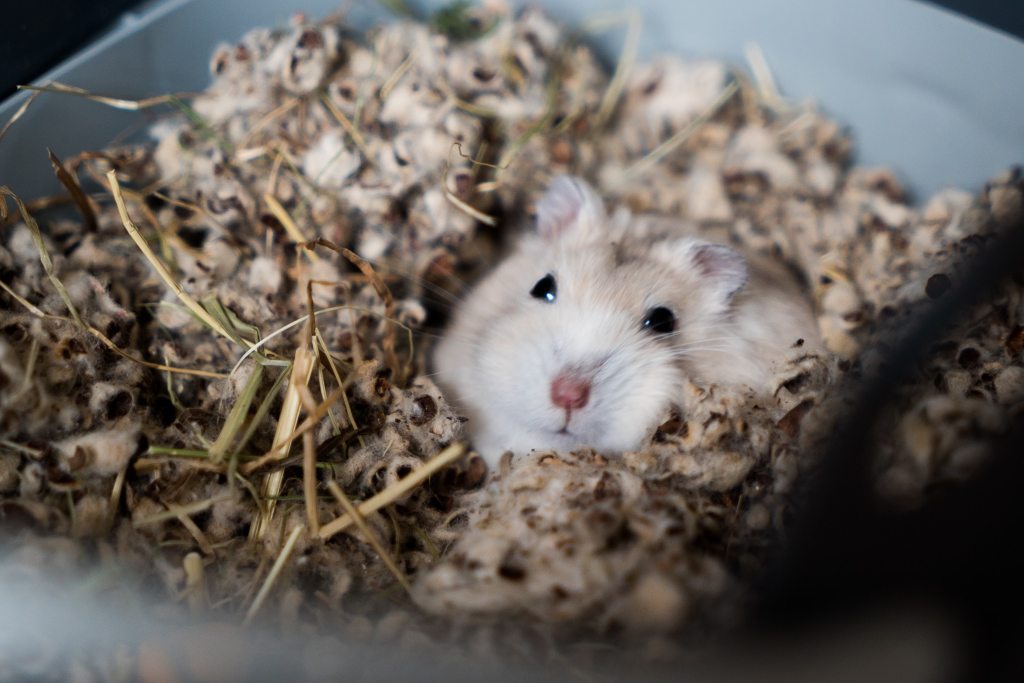As any pet parent knows, the costs of keeping an animal add up quickly. Between food, vet bills, and housing costs, not to mention toys and pet sitting, you’ll be out a bit of coin over the course of the animal’s lifetime. It’s important to have accurate accounting before you commit to a hamster so you know exactly how much to set aside — both monthly and for incidentals. If you wind up with a super healthy individual, you can always slip those extra dollars into savings or roll them over for your next pet. So, how much is a hamster? Here’s how it breaks down.

How much is it to buy a hamster?
Let’s begin with startup costs. Of course, the cheapest way to get a hamster (or nearly any pet) is to adopt. Sometimes, you can find young, well-handled rodents who just didn’t work out with their families. By taking in a rescue, you’re saving both the animal and some money. Keep in mind, too, that you want to deal with only a reputable pet store or breeder if you go that route, or you may wind up with a sickly or unfriendly small pet. With all that in mind, budget for about $10 to $20 per hamster for a standard breed (an extremely unusual one might set you back a bit more).
The cost of owning a hamster
But remember, that doesn’t mean owning a hamster costs just $20. You need to think about both the initial one-time expenses like a cage, the recurring expenses like food, and the occasional expenses like vet care. This is how much you’ll spend on those things.
Pre-hamster costs
Don’t even start looking at cuties until you have a few things settled in your home. He needs somewhere to live, after all. Get a cage, bedding, and bowls for food and water. His house will set you back up to $50 (though, of course, you can invest in a super-fancy model for more), and the two bowls should come in at $15 or a little more for auto-refill. Then comes the fun part: You get to decorate. Your hamster will want to chew, dig, hide, run, and explore. Every cage design is different, and that’s what makes it enjoyable to create. Decide what theme you want to go for, set your budget, and then shop (amounts vary, but expect to shell out at least $50). All cages will need some tubing, wooden toys for chewing, a hamster wheel, and any other housing or climbing accessories. Can’t decide on a look? That’s actually perfect because your mammal will want a change-up now and then.
Everyday necessities
We’ve covered the startup fees, now it’s time to think about the items you’ll purchase regularly. Hopefully, water is free, but your hamster will need food and bedding on the regular. He’ll eat food every day and require new bedding approximately once per week. Of course, you won’t buy these things all the time. Instead, you can stock up monthly or every other month by purchasing in bulk. If you can find a big bag of food, you’ll pay about $10 and it will last you two months (unless you have many mouths to feed) and similarly with the bedding. Lastly, you will wind up replacing toys periodically and especially anything he likes to chew on. Add that to your monthly bill.
Vet and other rare bills
Even this little guy should get a checkup once per year. Research your animal doctor in advance — even if you already have one for your dog or cat, they might not take hamsters. Depending on where you go and where you live, the visit should cost $30 to $60, assuming it’s routine. If he requires special meds or dental work, you could be looking at a bill of $100 or even more. In terms of other sporadic fees, determine where he will stay when you leave town. Hamsters can’t be left on their own while you vacation, but a drop-in sitter will do him just fine, provided it’s only a few days.
All told, you’ll spend about $800 over the course of your pet’s lifetime, assuming he makes it to 3 years old. While this won’t be all at once, you need to prepare for these costs before bringing him home — never make an impromptu pet purchase without thinking through the long term, both emotionally and practically. However, even though that’s a big figure, it’s still a lot less than owning a dog or cat, making the hamster a good intro pet or for those not looking to overspend.
Editors' Recommendations
- A simple guide to what to feed tadpoles in your aquarium
- Is my rabbit pregnant? 5 telltale signs you should know
- What you need to know about sugar gliders before you get an exotic pet
- Bunny care 101: If Easter inspires you to adopt a rabbit, read this first
- Are female betta fish worth it? Here’s why you should consider getting one of these pretty fish





